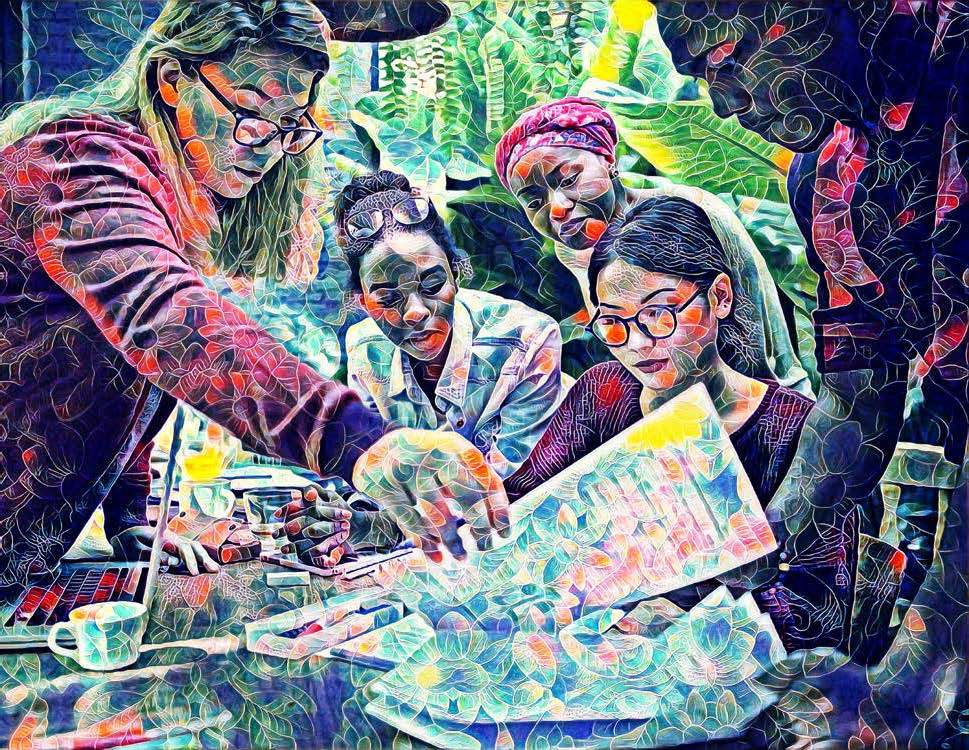Untangling the health crisis and violence
By situating family and domestic violence in the context of the social and cultural determinants of health, we can gain greater insight into more effective ways of ensuring the health, safety and well-being of Indigenous women, children and young people, who are radically overrepresented in the data
Family and domestic violence in Aboriginal and Torres Strait Islander households and other social settings not only contributes significantly to a public health crisis but also reflects the broader systemic injustices faced by Indigenous Australians. Situating family and domestic violence in the context of the social and cultural determinants of health allows greater insight into the underlying factors and more effective ways of ensuring the safety and well-being of Indigenous women and children. We cannot ignore the slow recognition of Indigenous rights and the increase in racism that also play a role in the poor health outcomes of Indigenous Australians.
The disproportionate rates of family and domestic violence involving Aboriginal and Torres Strait Islander Australians present health and allied professionals with a disturbing challenge. Intimate partner violence is the leading cause of lost years of life for Aboriginal and Torres Strait Islander women aged 25–35 years. Between 1999 and 2018, the rate of Aboriginal children in out-of-home care increased from 18.3 to 59.4 per 1,000. Family violence is associated with alarming rates of incarceration of Aboriginal and Torres Strait Islander men and women, both perpetrators and victims of violence, and it contributes to a wide array of other contacts with the justice system in every jurisdiction across the country. Aboriginal and Torres Strait Islander incarceration directly affects the under-reporting of family violence, with up to 90% of incidents undisclosed, often due to the justifiable distrust and poor relationships that these communities have with police.
Violence in Aboriginal and Torres Strait Islander households and other social settings results in a range of factors that are barriers to improving outcomes in health, education, employment and overall prospects for well-being. Another key factor relates to the challenge of reducing contact with the police and the extraordinarily high incarceration rates for men, women and children. Aboriginal and Torres Strait Islander individuals are much more likely to be hospitalised due to family violence compared to their non-Indigenous counterparts, with intimate partner violence five times more likely and two-thirds of physical assaults on Aboriginal and Torres Strait Islander women perpetrated by family members.
Exposure to violence
This issue is particularly pressing considering the young demographic and high levels of disadvantage in the Indigenous Australian population. Children’s exposure to domestic and family violence is considered a form of child abuse in some state and territory child protection frameworks, given its proven negative impact on their development.
Evidence relating to Indigenous Australian children warrants urgent reform and action in policy frameworks, such as the Australian Government’s National Framework for Protecting Australia’s Children 2009–2020, and the Family Law Act 1975.
Qualitative evidence from our research in the Wyndham East-Kimberley region confirms this recommendation. One service provider from an Aboriginal community–controlled organisation noted the destructive effects of family violence and alcohol on the community and linked them to sexual assaults, domestic violence, poverty and hospitalisation for injuries other than assault – as well as liver and kidney health, diabetes, foetal alcohol spectrum disorder and suicide.
Alcohol misuse is a key contributor to family violence. We found in the Wyndham East-Kimberley region it was involved in nearly half of the family assaults committed by children and young people. The link between underage drinking and the onset of violent behaviour underscores the necessity of incorporating substance abuse treatment into comprehensive strategies aimed at curbing family violence. The cycle of violence is further fuelled by factors such as boredom, scarcity of resources and family influences.
Our analysis of Western Australian Police data in the region for the period 2009 and 2019 resulted in the following findings, all of which should be cause for a rapid response:
- Assault by a family member was the most common offence committed against children and young people and alcohol was involved or present in 52% of all incidents.
- Alcohol was involved or present at the scene of nearly half (49%) of the family assaults committed by children and young people.
- Three out of five young offenders were male and their average age was 14.
- Of the people accessing the crisis shelter in Kununurra, 40% were under the age of 18 years.
Alcohol misuse and family violence also affect birth outcomes and contribute significantly to small gestational age births, preterm births and perinatal deaths. Improved perinatal health outcomes for Aboriginal infants are attributed to interventions aimed at reducing alcohol and drug misuse and assault. Effective legislative and policy approaches should prioritise community-supported risk reduction measures such as early intervention and perpetrator counselling that focus on family restoration, community support and holistic well-being to address the root causes of these challenges.
Profound inequalities persist
Another key issue is improving access to and use of quality maternity care services to reduce maternal morbidity and mortality. However, profound inequalities in access, use and health outcomes persist. Similar to the major Indigenous-led research programmes, researchers recommend a more comprehensive and holistic approach to maternal health that takes into account pregnancy, birth and postpartum experiences and health and well-being, as well as the quality of care.
Foetal alcohol spectrum disorder and other brain injuries should be a focus of increased diagnostic services and treatment, along with preventive measures. Neurodevelopmental impairments due to FASD can predispose young people to engage with the law. Aboriginal young people with some form of severe neurodevelopmental impairment are vulnerable within Australia’s justice system. There is a significant need to improve the diagnosis of such impairments and identify the youths’ strengths and difficulties to guide their rehabilitation.
There are already large gaps in services related to family violence and, as an alarming majority of the victims are children and young people, needs will accelerate with population growth. There are no or few services to respond to some of the most significant impacts and the available services are substantially underfunded. Those services include screening, diagnoses and support for foetal alcohol spectrum disorder and other brain injuries, support for homelessness and women’s safe houses, healing programmes, qualified long-term staffing, wider updated communication, mental health services and cultural programmes.
More secure, evidence-driven and effective integrated and holistic services and interventions are desperately and urgently required, with sustainable and stable funding mechanisms. A longitudinal study of the lives of Aboriginal children entering detention is needed to best understand the gaps in services and system failures. This would enable a clear view of where and why the support they need is not provided or accessed, and why different services are more or less effective in providing support. Understanding the intersections between different systems is necessary to determine how those systems work together or, conversely, in isolation from each other.
Frameworks fall short
Most current legal and policy frameworks fall short in effectively protecting victims and preventing the placement of children in out-of-home care. Even more problematically, some exacerbate the danger of community dislocation, risking the permanent separation of another generation of children from their families. The Children and Young Persons (Care and Protection) Act introduced in New South Wales now imposes a two-year limit for children in out-of-home care to be reunited with their families, allowing for the creation of permanent guardianship orders without parental consent. There is therefore an urgent need to decouple the reporting of family violence incidents from automatic interventions by child protection agencies. As Indigenous families face the possibility of permanent separation, the stresses and traumas associated with such legislative measures can indirectly perpetuate environments where family violence and alcohol misuse are more likely.
Our research has led to several key recommendations to governments and local services: imposing further restrictions on take-away alcohol, standardising alcohol supply restrictions across regions, and conducting an economic assessment of the costs associated with alcohol and family violence. We have also recommended enhancing secure, evidence-based integrated services and interventions to offer comprehensive support to affected individuals and families.
Addressing family violence within Aboriginal communities demands a strategy that addresses the complex nature of the problem. Focusing on root causes such as alcohol misuse and implementing culturally sensitive interventions offers the potential for substantial progress in ensuring the safety and well-being of women and children. Achieving this goal requires collaborative efforts across health, justice, education and community services sectors to develop and maintain effective strategies founded on respect, equity and cultural competence.
A unified approach is crucial for reducing the impact of family violence and fostering the healing and empowerment of Aboriginal and Torres Strait Islander communities. As reported by most Indigenous epidemiologists and health researchers, the solutions must be Indigenous led, local and place based, but rigorously supported by the evidence. This applies to improving maternal health as well. The future health and well-being of Indigenous populations depends on getting this right, and that means involving the research community and the governmental institutions we report to, and delivering brave and frank advice to all levels of government and service providers. We need to understand and address unique characteristics of Indigenous populations that affect health and disease patterns.
Note: The authors are grateful to Ella Reweti for her research assistance.












